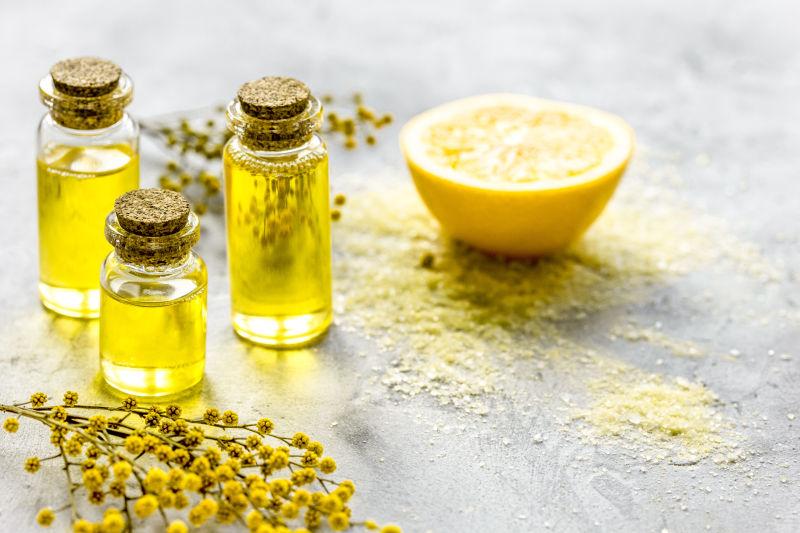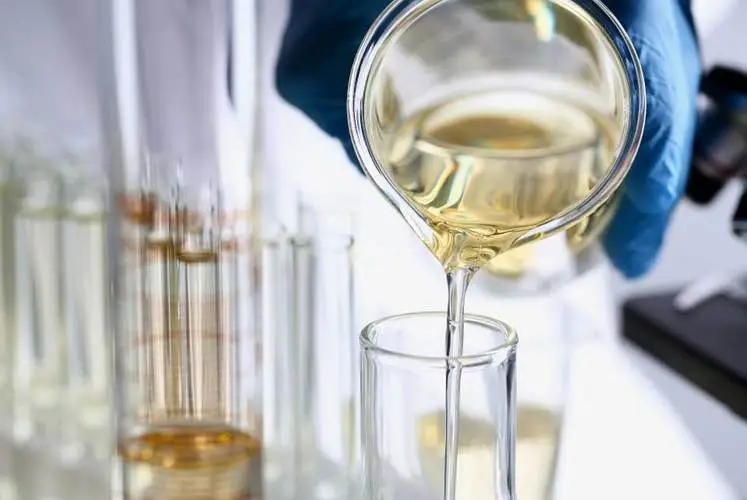1.Natural fragrance
There are two main types of natural fragrances: one is raw fragrance materials, which refers to resins, wood blocks, roots and leaves, etc., which are obtained by simple processing of aromatic raw materials. This simple processing can better retain some of the appearance characteristics of the fragrant ingredients and raw materials, making it easy to identify and use. In addition to the volatile oils that directly produce fragrance, aromatic raw materials also contain a variety of nutrients. Their aromatic smell and medicinal effects are the result of the joint action of multiple ingredients, and have relatively complete natural qualities.
The second is the extract of aromatic raw materials, including essential oils, balms, extracts, tinctures, etc., which are mixtures of multiple ingredients. There are many tiny oil glands and oil sacs in plants, which contain various plant oils. The main fragrant components of aromatic plants are in these oils. Essential oils can be obtained by physically separating and extracting the oils. Essential oils are easy to transport, store and use, expand the application scope of spices, and play an important role in promoting the development of the spice industry.

2.Synthetic fragrances
Synthetic fragrances are aromatic substances synthesized by chemical methods, which can approximately simulate the aroma characteristics of natural fragrances. For a natural fragrance, chemical techniques are used to analyze and determine the chemical structure of its aromatic components, and then chemical methods are used to produce compounds with the same structure. Some are also derived from plants through chemical reactions, which are synthetic fragrances. Therefore, the composition and taste of synthetic fragrance raw materials can be easily controlled and adjusted, while the composition and taste of natural fragrance raw materials are limited by nature.
3. Are natural raw materials more expensive?
Uncertain.
Many people think that synthetic raw materials are cheap. In fact, this is not the case. Synthetic raw materials can indeed increase output or reduce costs by improving production processes. However, some synthetic raw materials are still expensive due to more complex synthesis processes and more expensive sources of raw materials. (e.g. synthetic ambergris).
Although there are a large number of synthetic ingredients available in the low-end range, cheap perfume knock-off perfumes often use these low-priced ingredients to create fragrances. In fact, high-priced perfumes often use synthetic raw materials in the high-price range. However, high-priced perfumes also use natural raw materials and emphasize them in the copywriting, so the impression given to consumers is that natural is expensive and synthetic is low.
The great thing about humans is that they can improve processes, optimize processes, and increase purity and yield. A newly released synthetic spice may cost hundreds of thousands per kilogram. After continuous research and improvement by chemists and engineers, it can be reduced to several thousand yuan.
If it were not for the efforts of chemists and engineers, the current price of perfume might still be in the clouds, out of reach of the public.
4. Are natural raw materials more advanced?
Maybe.
The advantage of natural raw materials is that they are complex enough. The aroma of a rose has 500 molecules. Natural raw materials reflect the complex odor composition of the plant itself, and the smell details are even richer than the actual plant. For example, a good quality rose flower oil has a lovely lychee scent.
The advantage of synthetic raw materials, first, is that the smell is single enough, showing a single characteristic, reducing the interference of other odors in natural raw materials. For example, there is a raw material called "Ligustrum aldehyde", which smells very "green". A low concentration can be used to simulate the crisp, crisp, fresh and refreshing taste of apples, while a high concentration can be used to simulate the green smell of oxidation of apple peels after being stored for a long time. taste. Therefore, synthetic raw materials are suitable for "embellishment", "modification", "transition" and "connection".
The second advantage lies in the wide range of scents, which can simulate more abstract conceptual aromas, such as emotions and values, as well as fit ocean air, sediment, plastic, and other aromas that cannot be extracted from natural animals and plants.
An important symbol of modern perfume is the use of synthetic raw materials. Synthetic raw materials are to perfumers what new pigments are to painters, making creations richer and broader; the quality of a formula does not depend on how many natural raw materials are used, but on the overall smell. Of course, if a recipe uses cheap synthetic ingredients purely to save money, it is definitely not a good recipe.
Many consumers think that natural raw materials are high-end, which is actually due to the bonus descriptions in the slogans, such as "XXX spice plantation was once used by the royal family, and the annual output is limited to ensure quality." However, synthetic raw materials also have a lot of stories to tell in the copywriting of "high-quality". The precision laboratory is equipped with a number of Ph.D. R&D personnel, which lasted for XX years. After testing XXX new molecules, they were screened and introduced to the market."

5.Future trends
In 2020, more than 100 flavor and fragrance companies signed the Sustainability Charter designated by the International Fragrance Association (IFRA) and the International Organization of the Flavor Industry (IOFI). The charter highlights five focus areas: responsible sourcing, reducing environmental footprint, employee well-being, product safety, and transparency and partnerships.
Traditional natural methods of extracting scents from trace amounts of scent sources that remain in nature often do not offer cost advantages. Dutch biotech company Isobionics is avoiding direct head-to-head competition with established companies by starting with ingredients that offer orange and grapefruit scents. Isobionics notes that traditional methods of producing isoprenoids from orange and grapefruit peels and juices are expensive and laborious. For example, the production of nootkatone ingredient, which is widely used in markets such as perfume, personal care and household cleaning, consumes approximately 400,000 grapefruits per kilogram; the production of each kilogram of Valencene ingredient requires 2.5 million kilograms of orange synthetic bio-flavor supply chain. Bringing about the potential for a more uniform and continuous flow of high-value raw materials without interruption. In other words, the company would be unaffected by climate, weather, crop failures, price and political fluctuations, or the logistical complexities of sourcing raw materials from farmers and other suppliers in remote areas. The choice of synthetic organisms to replace natural production is a long-term trend. At the same time, the cultivation of natural fragrance raw materials and the improvement of extraction processes have made natural fragrance raw materials more abundant, which is also a far-reaching topic.
Stainless Steel Mixing Equipment Application
Plate Centrifuges Application
Esterification Reaction In Fragrance Synthesis
Contact: Project Manager
Phone: +86-18120438367
Tel: +86-18120438367
Email: info@tycoretech.com
Add: No. 1, Optics Valley Avenue, East Lake New Technology Development Zone, Wuhan, Hubei, China
We chat
